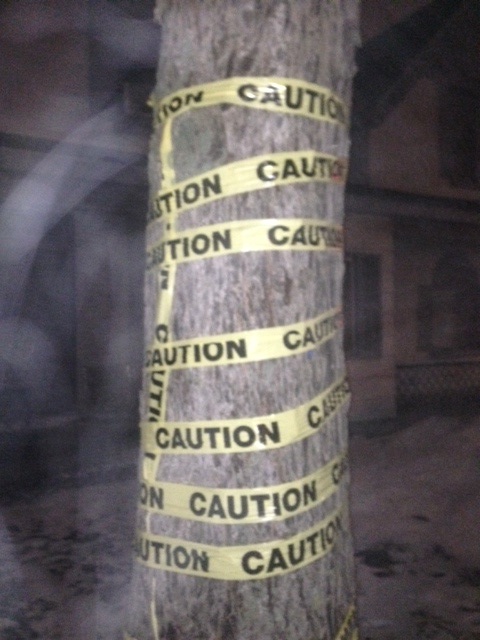The New Year has given life to new opposition to London’s $500-million bus rapid transit plan.

While many Londoners slept on Sunday night, a new anti-BRT group called “Up Shifts Creek” covered trees along BRT routes with yellow caution tape.
The yellow caution tape is meant to signify the trees and property that will be lost when the city expropriates land for the transit plan.
Michael Maguire is with Mortgage Wise Financial, located on Wellington Road, south of the S curve. Maguire told 980 CFPL the transit plan will severely impact his business.
“Currently I’m on a map that’s going, when they put BRT in, is going to wipe out my business,” he said. “We’re going to have to try to relocate and finding a new location is expensive and not easy.”
City plans estimate between 60 and 80 trees will be lost on Wellington near the S curve for the transit plan. Richmond north of Oxford could lose even more trees, 70-180, depending on what city council decides.

Get daily National news
Councillors have to decide whether some routes should have four or six lanes. Expanding to six lanes on Richmond will severely restrict front lawns for many homeowners.
Up Shifts Creek blames the city’s rapid transit office for poor communication, which has been a common theme throughout the BRT process. Maguire says he wasn’t aware the land his business sits on would be expropriated until he went to a public information meeting.
“I’ve had no say. I went to a meeting to find out what was going on and looked on a map and saw that they had put the road over top of my property. They never communicated that to me before the meeting started. Had I not gone to the meeting I wouldn’t have found out that was happening,” he said.
The city held a series of public information sessions in mid-December and will hold two more on Wednesday at the Central Library. The two January sessions weren’t originally planned, they were added after London North Centre MP Peter Fragiskatos scolded city hall for not doing a good enough job to communicate with the public.
London’s BRT plan has spawned groups both for and against the transit initiative.
Downtown business owners created “Down Shift” last year to voice the opposition to the plan. Their opposition included lawn signs and the funding of a poll. A pro-BRT group called “Shift Happens” was created in response to Down Shift to promote the need for increased transit in the city. All of the names are related to “Shift London,” the official name for London’s transit plan.
Maguire hopes “Up Shifts Creek” will also have an impact on the local discourse.
“They’ll certainly see how broad this is and how the road is going to expand and take out a lot of properties,” he said.
Proponents of London’s BRT plan got a big shot in the arm last week when the provincial government announced $170 million towards the plan. The city has also committed $130 million through development charges. City hall is hoping the federal government will cover the remaining $200 million but they haven’t indicated yet whether they will support the project.
In March, city council will be asked to go ahead with the final phase of the environmental assessment.












Comments